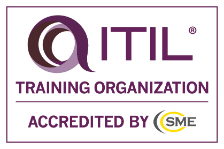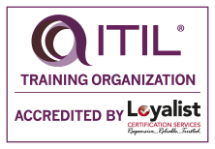 ITIL Compliance : This is especially true for 121 Web Applications A Complete….
ITIL Compliance : This is especially true for 121 Web Applications A Complete….
Web Applications – A Complete Guide provide additional assurances to availability.
Typically, these procedures are part of the service, though additional requirements may be available through a custom design.
The greatest benefit of cloud computing solutions is the cost to businesses.
To provide the scalability and availability mentioned, companies traditionally needed to expand their existing infrastructures to provide the physical support required and build traditional fat applications to take over or expand existing software capabilities.
These solutions take on a great cost in time and money for companies.
By utilizing the web, the costs of these solutions are shared with the provider of the service.
In fact, the cost is drastically because the service provider absorbs the buck of the cost with the intention of sharing those portions of the cost with other companies requiring the services.
For the company seeking these services, they simply need to understand what they need and find the service provider who is willing to provide it. 15.2 Adapting Service Design Designing the infrastructure and applications required to provide companies with a solution that works for their needs falls heavily on the service provider, though the customer should have a clear understanding of the process and requirements of IT design.
This is especially true for 121 Web Applications – A Complete Guide regulated industries seeking ITIL compliance.
Simply because they have place the buck of IT concerns on the shoulders of a service provider does not prevent the company from removing themselves from the process.
Service design is particularly interested in all aspects of the architecture, processes, policies, documentation, and requirement handling.
Each of these components have some control in how the entire infrastructure behaves to ensure that it meets the greatest benefit to the customer.
ITIL topics which have oversight to these components are the processes and concepts of Service Catalogue Management, Service Level Management, Capacity Management, IT Service Continuity, Security Management, Supplier Management, and Availability Management.
For service providers, concentration in developing each of these concepts provide a greater understanding of the capabilities and limitations of the service they offer.
It also allows greater flexibility in parsing out the required bandwidth, storage, and server platforms for their customers.
This isn’t just a technical support concern, but a marketing strategy.
Understanding the design of the implemented infrastructure and applications that are being provided allow the sales team the much needed information required to satisfied even the most difficult customer.
Since the remaining disciplines of ITIL fall entirely on the shoulders of the service provider, the topic of service design became the most important topic for the customer.
These are the topics are greatest concern to the basic customer: am I getting the right service, will it meet my 122 Web Applications – A Complete Guide needs, will I have enough capacity, will my data and applications be available, is it all secure? Applying ITIL disciplines serves two purposes.
As a framework for delivering IT services, it provides the concepts and processes that can ensure that every aspect of the offering is working independently sufficient and interdependently with other processes appropriately.
The result is a solution that in theory should consistently meet the requirements of the customer.
This point is theoretical because designs require the proper implementation for it to effectively deliver.
The other purpose for applying ITIL disciplines is essentially a customer service and marketing purpose: customers who are hoping to comply with ITIL standardization require the service providers of their IT technologies to be ITIL.
Three processes are of considerable note: Capacity Management, Availability Management and Service Level Management. 15.2.1 Capacity Management For ensuring that resources are properly optimized and provisioned according to the organizations requirements in a manner that provide a high level of performance and is cost effective, the process of Capacity Management is used.
The high level activities define how applications are sized, workloads are managed, capacity is planned, and resources are managed, as well as performance. 123 Web Applications – A Complete Guide 15.2.2 — 15.5 Continual Service Improvement Service Improvement practices are implemented to ensure that IT services are aligned and realigned to the changing needs of the business.
When an IT organization is established, it must decide what services can and will be provided.
The infrastructure, applications, configurations, and processes required to deliver those services are designed and implemented into the environment.
Unfortunately, simply implementing the components for delivering the services is not enough; the organization has to utilize those resources effectively.
Additionally, the requirements the business has its IT support is constantly changing, requiring the services to be revaluated and changed accordingly.
Starting from scratch is not practical, so the goal is to continually apply improvements to the environment to meet and exceed service expectations.
However, continual improvement is not something that happens.
It must be supported by every person within the organization and manage appropriately through well defined goals, processes, procedures, and roles and responsibilities.
Continual improvements for web applications, particularly those that are open source driven, may not lack in the continual improvement aspect but may be lapse in the control of such improvements.
The result may be stringent controls on improvements to the core application code and guidelines to code which is attachable to the application to add features and functionality. 134 Web Applications – A Complete Guide 16 Using the Web to Promote ITIL The technology of the web is very conducive for implementing and monitoring the disciplines of ITIL.
Three types of applications can be built to support the processes: ? Monitoring ? Workflow ? Documentation Libraries ITIL is a standard which to manage the IT environment effectively and efficiently.
A possibility of being evaluated for ITIL compliance adds a certain assurance that the disciplines will be properly implemented.
As a standard, some guarantees are in place.
The first guarantee is that data is available to show how the different aspects of the IT solution are working to meet the service requirements place on them.
The second guarantee is that the processes and its components are clearly defined, including roles and responsibilities and cross process relationships.
The third guarantee is that the required databases are in place to support the IT service.
These guarantees all mention the existence of the components that make up the requirement framework for effective ITIL implementation, but their 135 Web Applications – A Complete Guide existence does not guarantee that the components are being used effectively.
Fortunately with these guarantees in place, the foundation for creating web application around ITIL are also in place.
The first type of application possible is monitoring the services required by the customer.
One of the web technologies for applications is the mashup.
With this technology, three possibilities can be fulfiller: the ability to monitor two or more distinct functions in parallel; the ability to combine the data for two or more distinct functions together to do trend analysis, for instance, combining measurements for availability and capacity to identify the relationship between the two; and the ability to combine the data of two of more distinct functions in a cause and effect relationship, for instance the number of changes that are the result of problems.
The advantage of the mashup for monitoring the IT infrastructure lies in the user interface.
In mashups, the user defines what they want to see in the interface and, ultimately, the interface can be different for each user.
This promotes supporting the diverse responsibilities in business.
For instance, a system administrator will want to see more detail in what they are monitoring than the overview statistics appropriate to an executive manager.
It the same comparison, the system administrator is wants to map data to ensure that the operation is intact, while the executive is looking to map the data to finances.
For each user, how the information is interpreted is just as important 136 Web Applications – A Complete Guide as having the information available and the ability to build their own interface only serves to have the data interpreted in the desire way.
Additionally if the mashup component that allows the data to be interpreted in the desire way does not exist, the development of such a component is made simpler using web technologies.
Even if the system from which the data is retrieved is a traditional non-web implementation, the technologies of the web hold the keys for tapping into these applications and retrieving the data necessary for monitoring.
And the web technologies do not stop there.
If they can be used to retrieve information, they can also be used to enter information into the system.
One of the problems faced in any IT organization is the diverse range of applications in place to ensure that operations are maintained.
These applications are diverse in the languages they use, their handling of data, and their functional purposes.
To have two or more of these applications communicating with each other used to require a bridge that was extensively developed and acting as a third application between the two primary systems.
Web development can create this bridge as a add-on to both applications and maybe even all the applications used within the environment.
In creating these “bridges,” the possibility of creating applications that contribute to workflow management are realized. 137 Web Applications – A Complete Guide Workflow management specifically focuses on moving work through several process and in doing so identifying bottlenecks for work and improvements to the support infrastructure or processes.
For IT support, workflow opportunities are everywhere.
For instance, when a incident happens, a “ticket” is created and routed to the first level of support.
If a resolution cannot be applied at this level, the ticket is routed to the next level of support.
This routing usually involves moving the ticket from one support team’s queue to the next.
Depending on the context of the incident and its severity, further notification may be required.
Furthermore, if the incident is caused by a known error, the resolution may be attached to the ticket for purposes of understanding how often a particular resolution is utilized.
If a the incident is not caused by a known error, then the resolution or workaround will be placed in the ticket when it is found, allowing the database holding all known errors and resolutions to be populated with the new information.
But the workflow doesn’t necessarily end at this point.
If a incident is unresolved, it is now taken over by the problem management process where the problem is diagnosed and a resolution sought out.
Once a resolution is found, the change management process is now initiated to implement the resolution accordingly.
And since all changes are essentially changes to one or more configuration items, the process configuration management process is not evoked to complete the change.
The work can continue depending on the impact of the problem and resolution, but this short 138
Read more about ITIL Compliance : This is especially true for 121 Web Applications A Complete….:
Accredited ITIL Foundation, Intermediate and Expert Certifications

